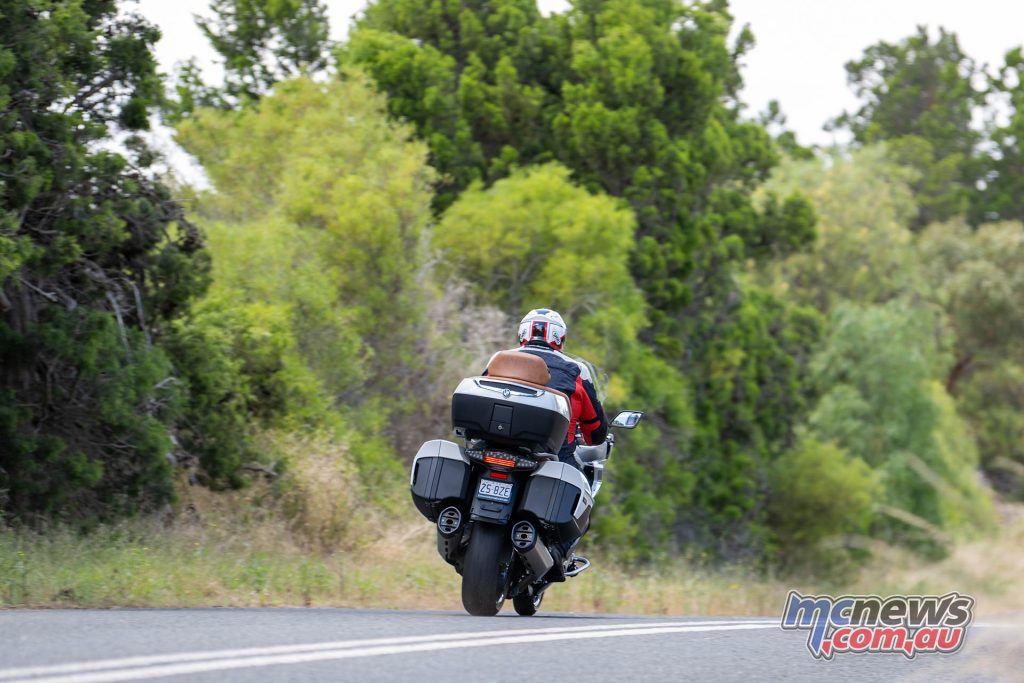2022 BMW K1600GTL review
Motorcycle review by Trevor Hedge – Images RbMotoLens
The GTL is the luxury flagship of what is a four-bike ‘K’ line up from BMW that all share similar underpinnings. A storming 1649 cc in-line six-cylinder engine, Duolever front end, Paralever rear suspension with integrated shaft drive along with plenty of creature comforts. The GTL we recently had in for review is the big daddy of the K family.
The K 1600 GT is the base but still very well appointed starting point in the quartet and retails from $43,845 ride away.
The base GTL starts at $44,605 ride away but our machine on test had the sexy Option 719 Mineral White Metallic ($3000) that is almost pearlescent. Trick forged Option 719 Classic rims ($2500) were also on our test bike along with the Option 719 saddle ($350). Those options add almost 6k to the price which made our test bike a $50,506 ask.
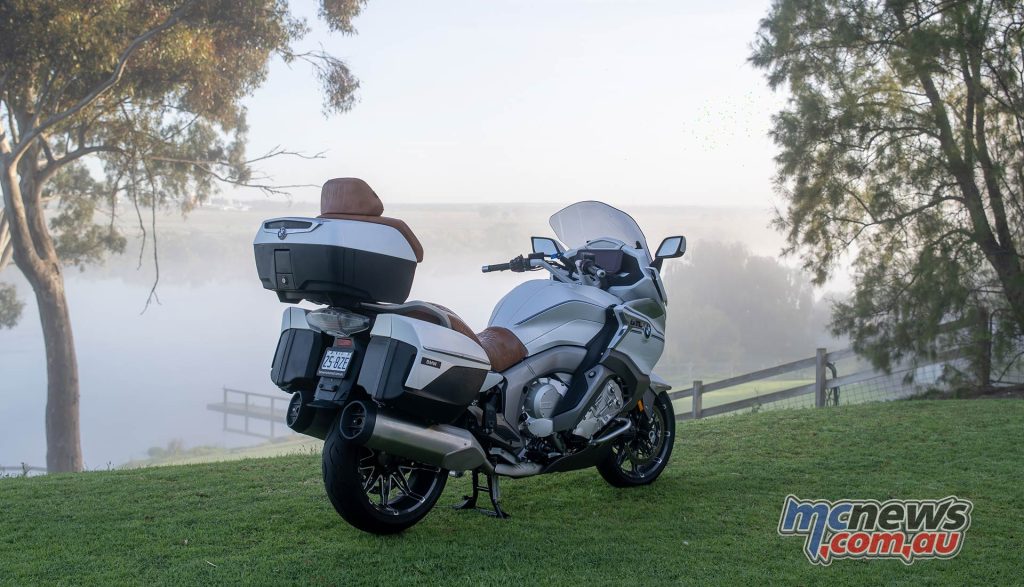
The K 1600 B is the bagger of the brood with forward mounted foot-boards (if that’s your thing) and retails from $43,850 ride away. The K 1600 B also comes in a Grand America version complete with a larger screen, better audio system and a top case from $46,545. The B and Grand America models have slightly less rear suspension travel which means they are not quite as smooth riding as the other variants. However, for those with very long legs the forward pegs might be welcome. There are also aftermarket heel-toe shifters available for the K 1600 B and Grand America models.

The entire K range received a heavily revised engine for this model year that has moved the power further down in the rpm range.
An updated ECU, two knock sensors and an extra two broadband lambda probes helped get the 1649 cc straight-six over the EU-5 line. Engine drag torque control (MSR) is now standard across the line-up for 2022 and the engine can now better cope with lower octane fuels when required.
The Euro5 update has brought with it an improved riding experience, as just about every engine I have sampled after being updated to the new emissions standard has done. The new regulations have their drawbacks in regards to tighter noise restrictions, and the engines generally run hotter to help ensure a clean burn to meet the emission regulations.
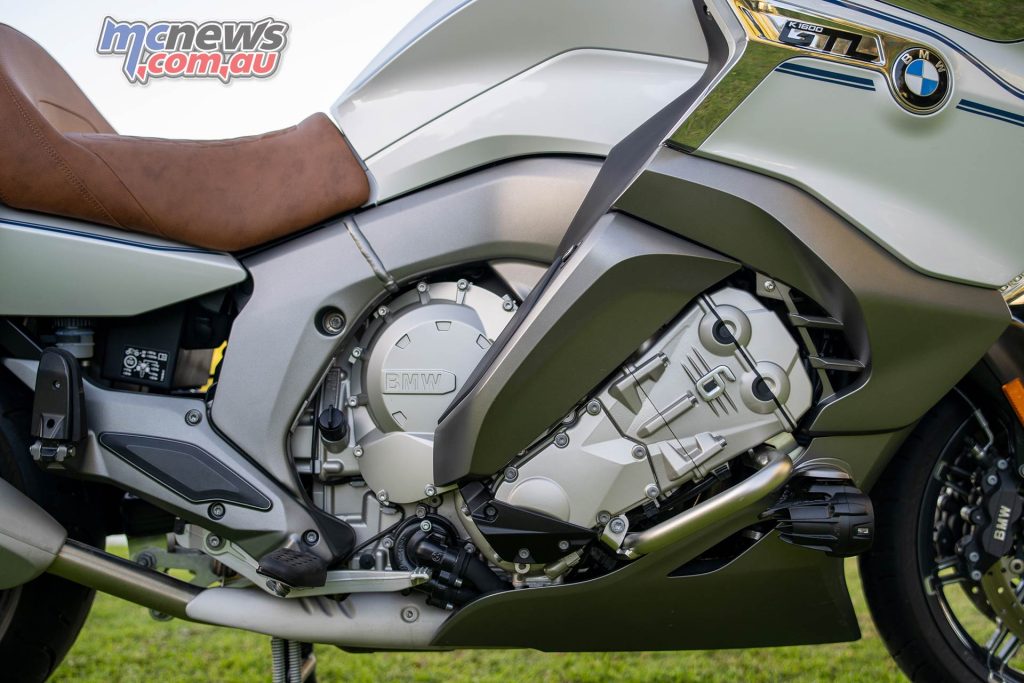
However, for the most part, on engines where there were still improvements that could be made to the cylinder head and engine management systems, the result for us is more grunt and more response. That is certainly the case here. Everyone’s a winner baby that’s no lie…
The numbers you ask?
Peak power remains the same as before at 160 horsepower, but it is now reached 1000 rpm sooner. 180 Nm at 5250 rpm and 160 hp at 6750 rpm are the quoted figures from the 1649 cc in-line six. And yes these big K bikes can do wheelies, I have no photographic evidence this time round with the GTL but here is one I prepared earlier on another K 1600 GT. Coz, wheelies….
I had feared that Euro5 might be the end for the K bike six-cylinder models. While you might think the engine tech is really complex in these bikes, it isn’t really. They run a single throttle body and are not overly complex, so it is great to see them get a new lease on life into the Euro5 era.
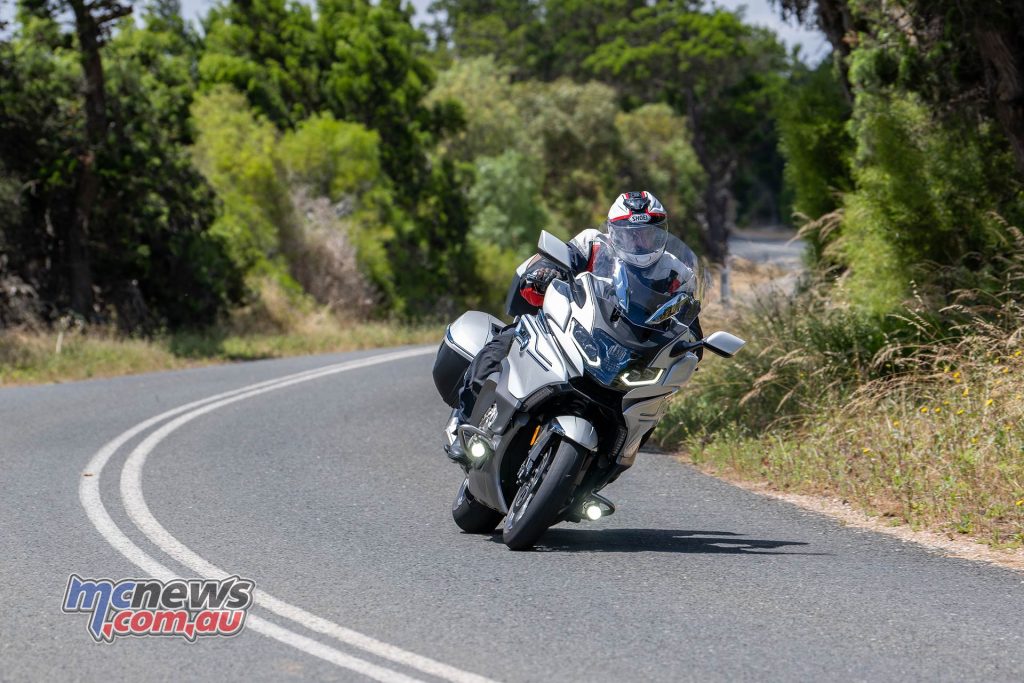
The latest two-way quick-shift is epic, as is the sound on ignition cut when you have the throttle pinned to the stop with that sextet of 72 mm pistons spinning hard, just keep feeding it cogs. Bit addictive that actually…
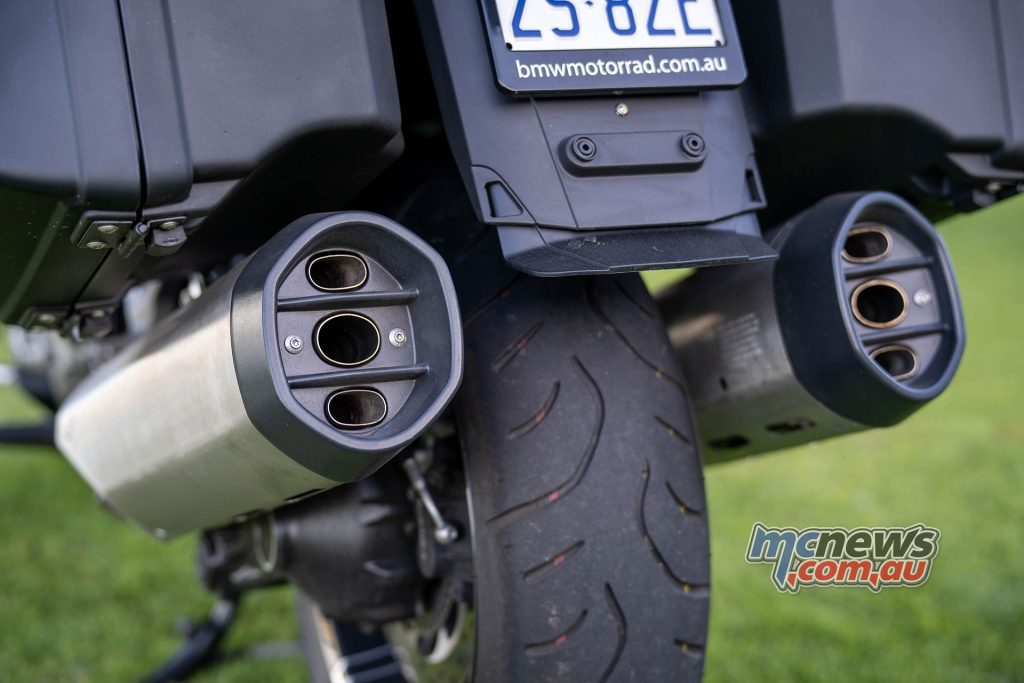
The drop into first gear from neutral can be a little agricultural but once away from a standstill you can pretty much forget about the clutch and use the quick-shifter. For the uninitiated, to get the best out of the modern quick-shifters you must forget all those years honing your perfectly timed little reverse throttle twitch while shifting up. Instead you must maintain a constant or positive throttle for all up-shifts. Do that and the system is impeccable. No throttle blip required on down-shift either.
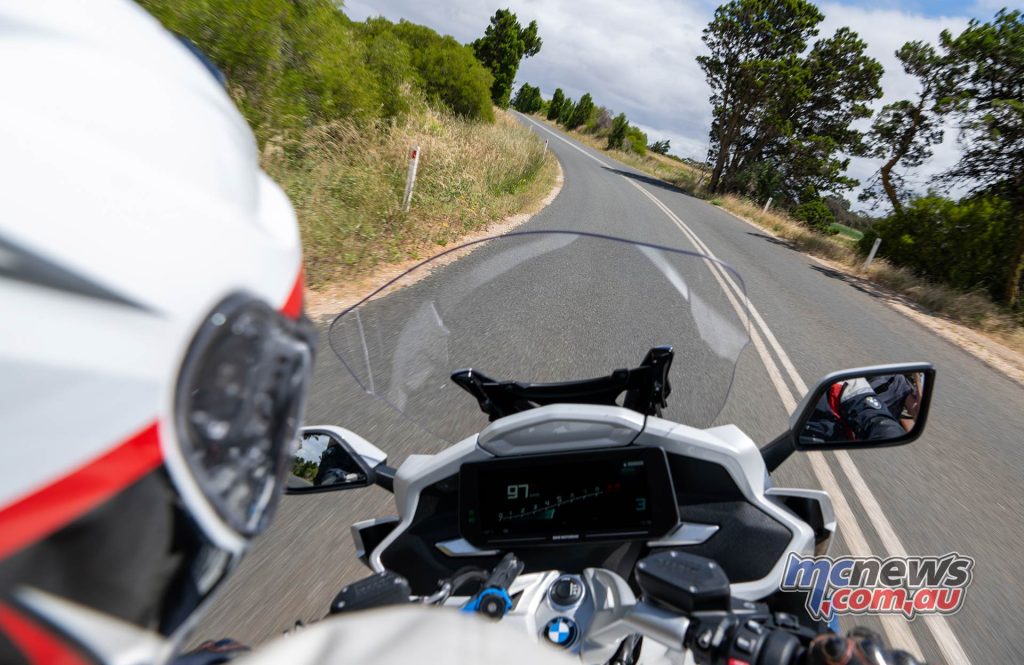
The ‘Next Generation’ Dynamic ESA electronic suspension has been updated and takes its cues from a new six-axis sensor along with two displacement sensors at the front and rear of the motorcycle. I have zero complaints. The suspension does the whole suspending thing very well indeed. It automatically senses the load onboard and adjusts its pre-load to suit and the damping settings change when you change the riding modes, which also changes the engine response, ABS and traction control system maps to suit.
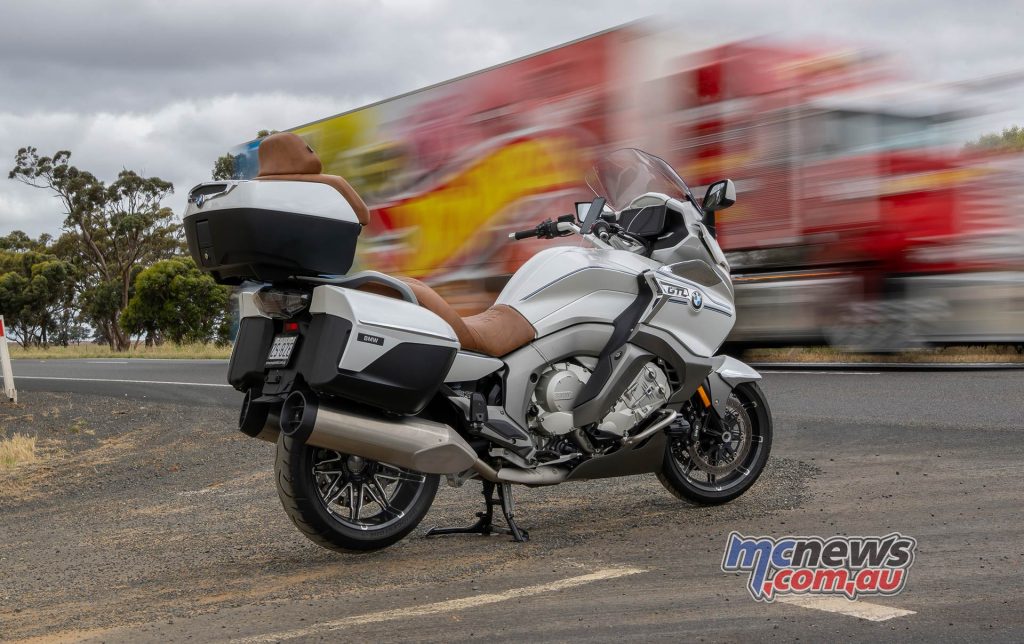
There is no fine tuning available of the individual suspension parameters, it seems BMW deems us not qualified, and to be honest they are probably right… I can’t criticise it at all. When photographer Rob jumped on the back it did its thing and I hardly knew he was there. In fact I once picked up someone travelling with a surfboard and kite surfing gear from the airport on a K1600GT and it took it in its stride.
The bike tips in nicely, holds a line well and is more agile than most would imagine. A good rider on the GTL would spank a crap rider on something much more sporting, all the while in complete comfort with stereo blaring, panniers full and a passenger half asleep on the back.
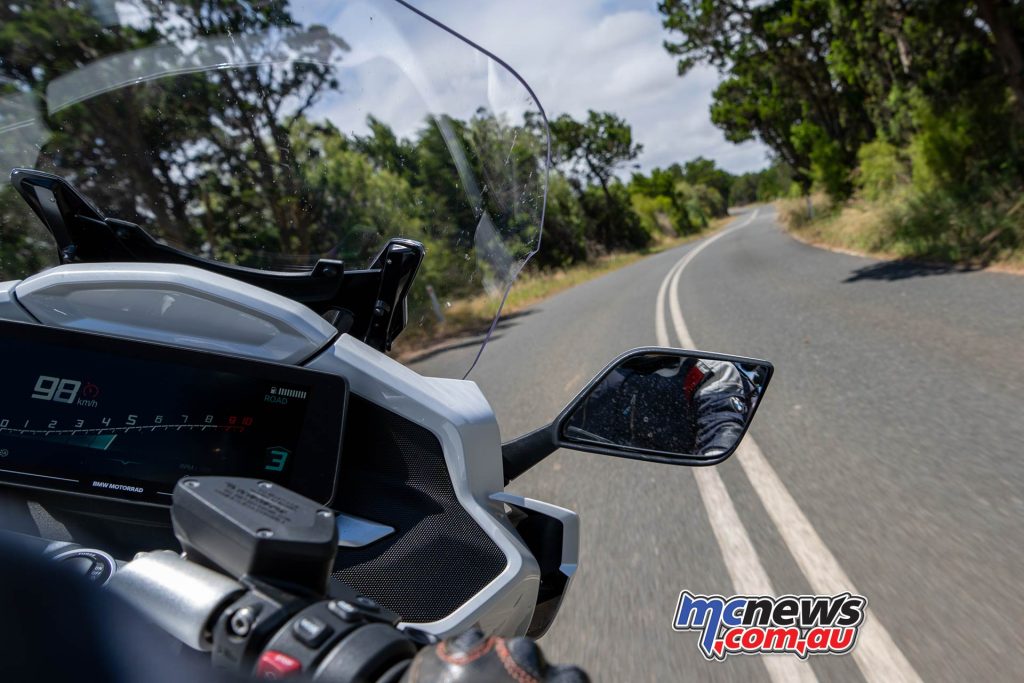
The Duolever front end works so well on big bikes like this. Honda even recently adopted a similar type of system on the Gold Wing. It can make you feel a little disconnected from the front tyre in regard to feel, but you learn to trust it soon enough, and the accompanying lack of dive and more stable control is welcome on big bikes like this.
It really is quite amazing how big motorcycles like these need such little steering effort even in tight terrain. Even quick changes of direction are really quite easy and it never feels cumbersome to steer once on the move, in the parking lot perhaps, but certainly not while in motion. This goes not just for the BMW, but for just about every bike in this uber-tourer class.
You can’t escape the fact though that the GTL has a big frontal and side area for wind to catch, and it does. Strong blustery winds can see you have to adjust your cornering lines to suit as the wind can alter the bikes trajectory through the corner.
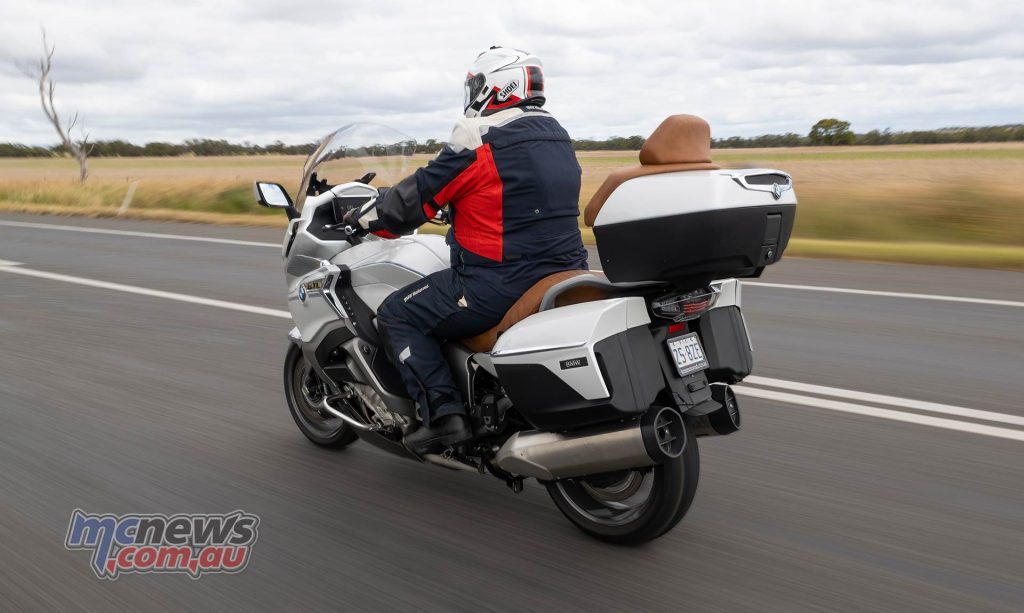
Braking is strong, stable and pretty much faultless as is the ABS. When the front brake lever is pulled the partially integrated braking system also adds a little rear brake for stability. I like it.
The headlight is now all LED but outside the engine update the other big news on the specification front is the new 10.25-inch TFT colour display with integrated ( from your phone) map navigation and connectivity as standard across the four model K 1600 range.
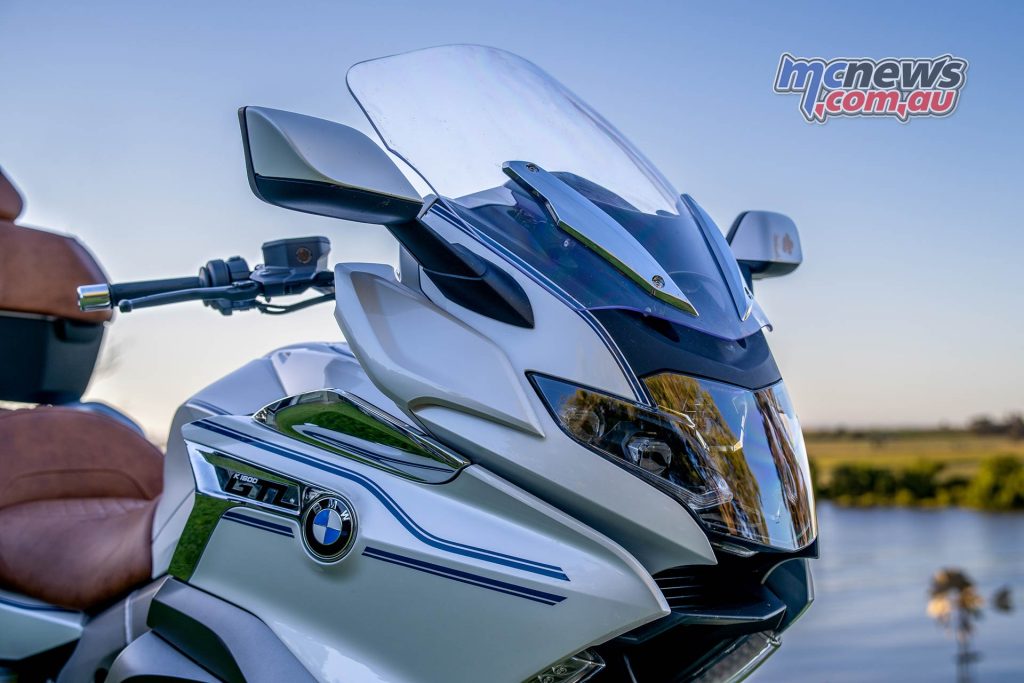
It is a high-definition 1920 x 720 pixel screen covered by hardened glass and really is quite a thing of beauty. However, the bullshit required to get the phone to sit in its snazzy little cubbyhole hidden below and behind the screen had me give up and put the phone on a quadlock mount and use that for nav instead.
Without the optional little 90-degree connector it was impossible to fit my iPhone Max in the cubby, and it certainly didn’t seem wise to try and squash it in. On the upside the USB-C port in the phone cubby provides plenty of juice and the actual compartment is cooled by a fan to ensure your phone doesn’t overheat.
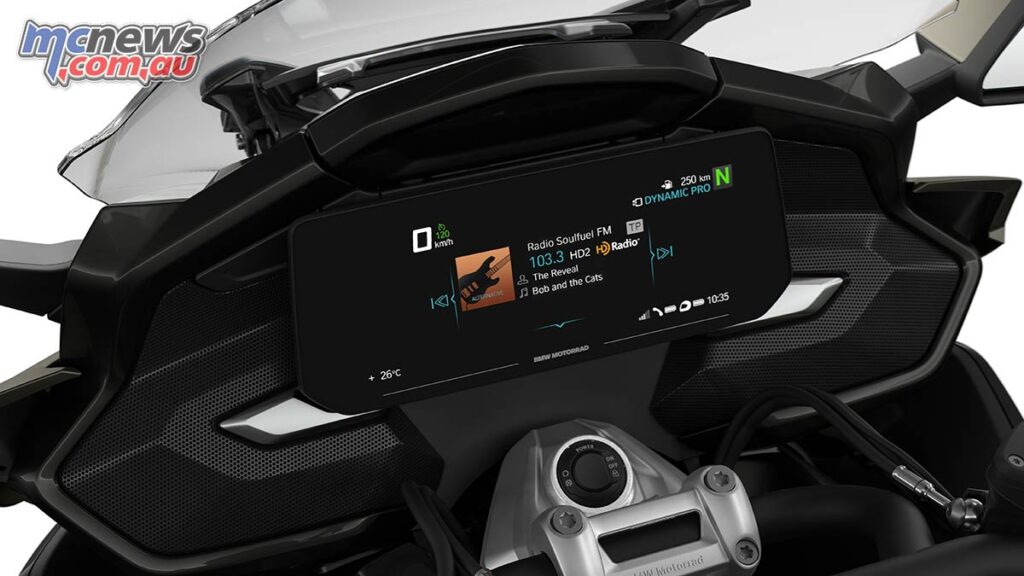
The navigation on the screen and media controls etc. are all driven from the BMW app on your phone, which requires the phone screen to be always awake etc, your phone joined to the bike WiFi, and for you to then do six turns and wiggle your toes etc. You get my drift. I was over it real quick. Just give us Apple CarPlay and Android Auto thanks.
I know it all works fine when you get it all hooked up as I have used it on other BMW motorcycles. But I had places to be and standing there messing around with stuff that should be easier to do was not getting me there. You also have to plan your destination or route via the BMW app on your phone, rather than through the nice big screen on the bike. That would mean retrieving your phone from the cubby behind the screen and doing it all on the phone screen before setting out on your journey. Thus even if you got a second phone that fitted in easily, you would still need to pull it out to set your destination.
This is frustrating as all other elements of the user interface are so well executed. The BMW switch-gear is excellent. The now familiar BMW controller wheel on the left bar which works through four axis to scroll down and/or across various menus and sub-menus is brilliant. The screen is not a touch-screen but due to the nice switch-gear and menu system that poses no problems.
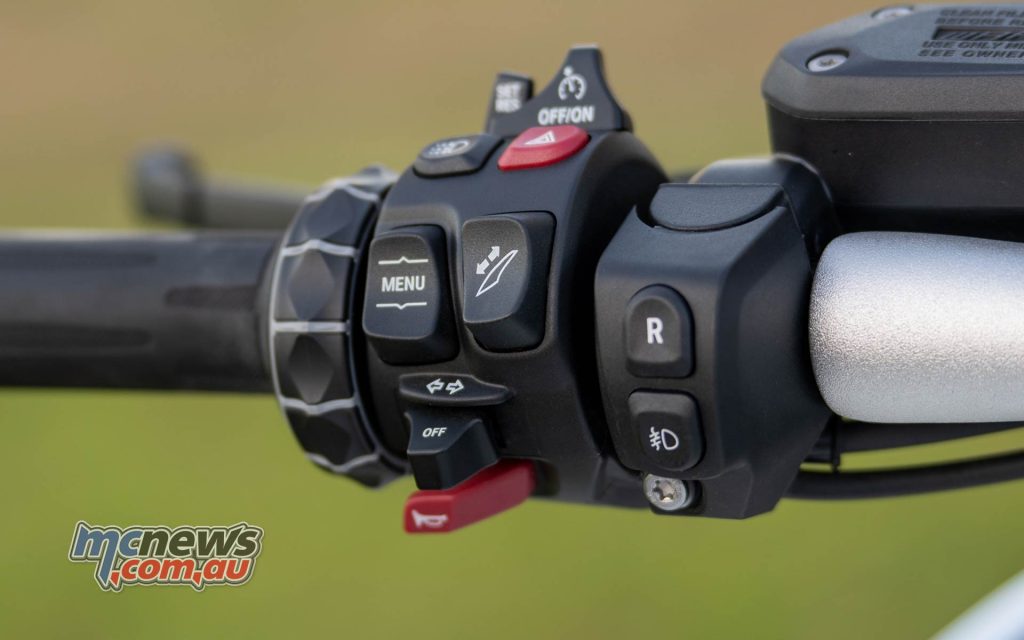
There are no specific buttons on the bars for the seat and grip heating, but there are four large buttons on the face of the side fairing facing the rider that can be programmed to bring up whatever function you desire. Thus I set one to bring up the seat heating, one to bring up the grip heating settings, and the other two to navigation and media. The only oversight on the switchgear is that none of it is backlit, not ideal.
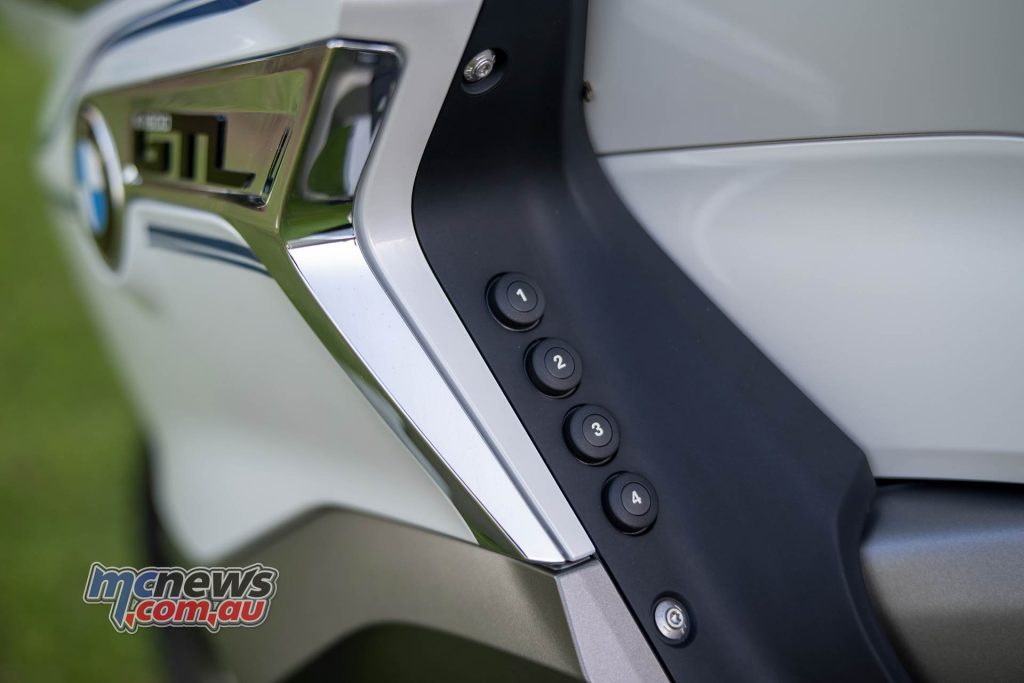
While the K 1600 GTL has plenty of tech it does miss out on some of the latest developments such as radar assisted adaptive cruise control and blind spot alerts. The conventional cruise control works well enough though.
The horn is stentorian! Which is my way of trying to sound clever in a more complicated way than just saying it is bloody loud!
The lights are effulgent, yes that’s me trying to be clever again… Driving lights are standard and the headlight points around corners. Fancy…
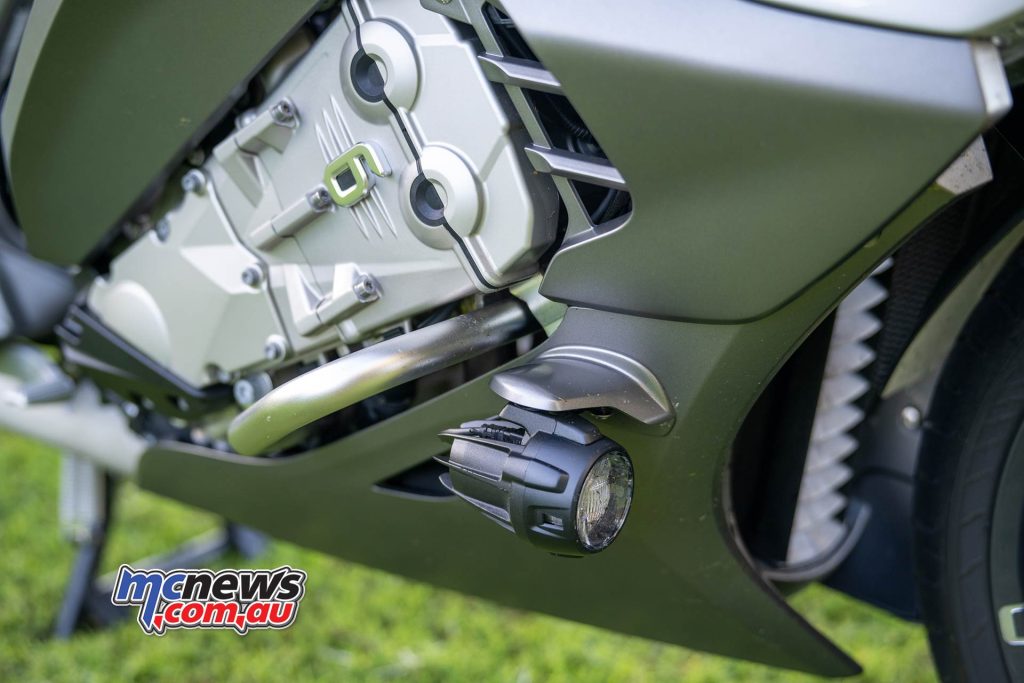
The speakers are not loud enough for highway work, anything above 100 km/h and you are wasting your time with them really. Be nice on a commute, but then I don’t think I would want to be using a 350 kg behemoth to commute on or try and put in tight city parking spots. The reverse though is certainly a huge help here. But yeah, this bike is made for the highway not the city, and it is out on the highway where it shines.
That previous paragraph I wrote after my first trips on the bike, but after another couple of weeks I actually found myself doing shopping and running errands on the GTL. I did a couple of sizeable grocery trips with four bags of shopping fitting in the panniers and top-box without any hassle. I had become less conscious of the bikes size and more confident in manoeuvring it around. It was so convenient be able to park up and put my helmet and jacket in the luggage rather than having to lug either around. Thus I ended up changing my mind on that score, and once I was more familiar with it I could see that using it as an everyday bike could actually prove quite practical.
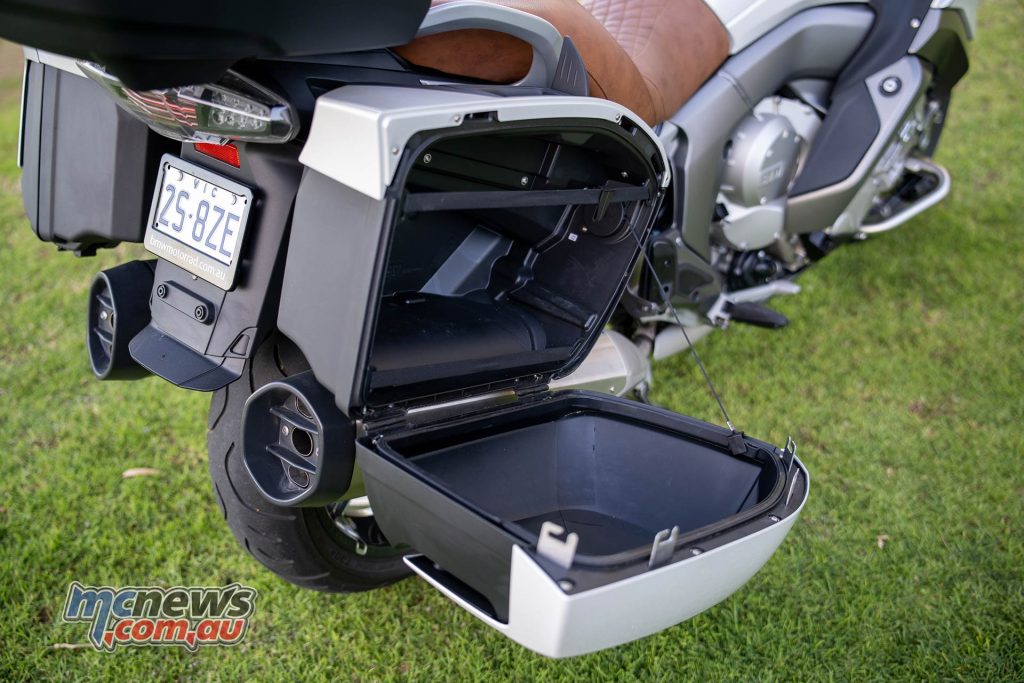
The big windscreen works great for my 178 cm frame and I used the on-the-fly electronic adjustment quite a bit as I changed riding position a little, or opened my helmet visor at different angles. I often lowered it down to a point where I could see over it to keep my eyes peeled for pot-holes, some of which were huge and stretched almost across the whole road after the recent floods. I used the entire adjustment range numerous times on each ride as wind conditions and road conditions changed and was able to find the right solution for every scenario.
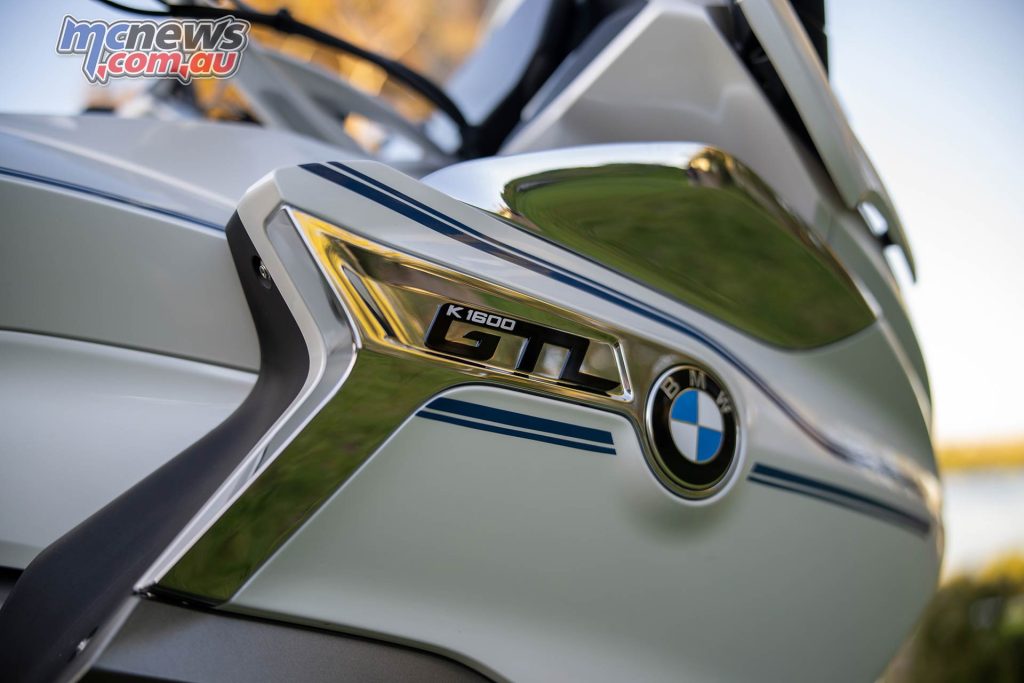
There are fold out wind deflectors on either flank of the upper fairing that help push cool air to the rider when needed, and around them when not required.
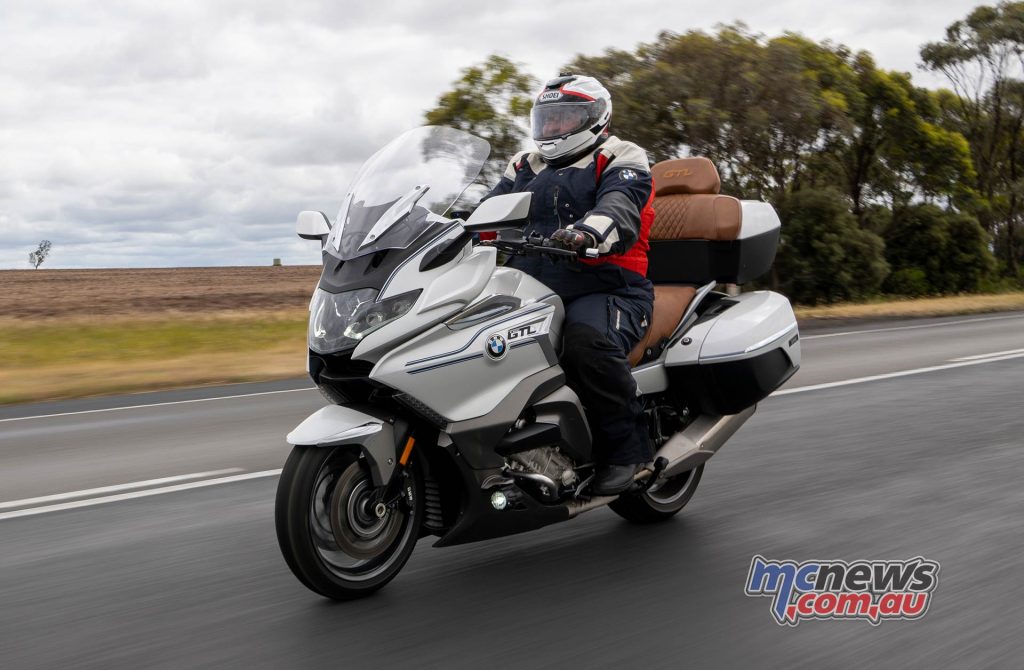
I had no complaint with the ergos and the fancy tan seat was comfortable enough. It should be noted that at 750 mm the GTL has a lower seat height than the regular GT, thus tall folk might be wise to plump for the optional higher seat that perches you 800 mm above terra firma. Few bikes take care of the passenger as well as the GTL, who like the rider also scores a heated seat.
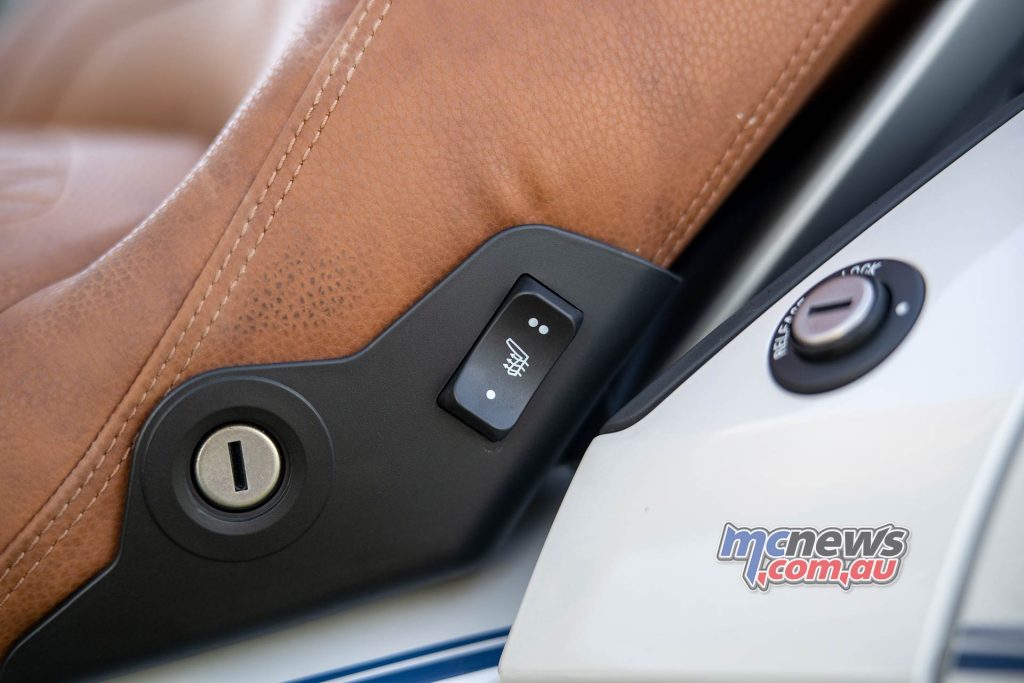
I felt zero vibration and overall the cockpit of the K 1600 GTL is a pleasant place to spend time. If not for having too much work to do on MCNews.com.au, and a sizeable property to get ready for summer, I would have just taken off to some random destinations after the ASBK finale at The Bend rather than heading home to work. During my time with the bike I covered over 2000 kilometres, and would have liked to enjoy it for many more.
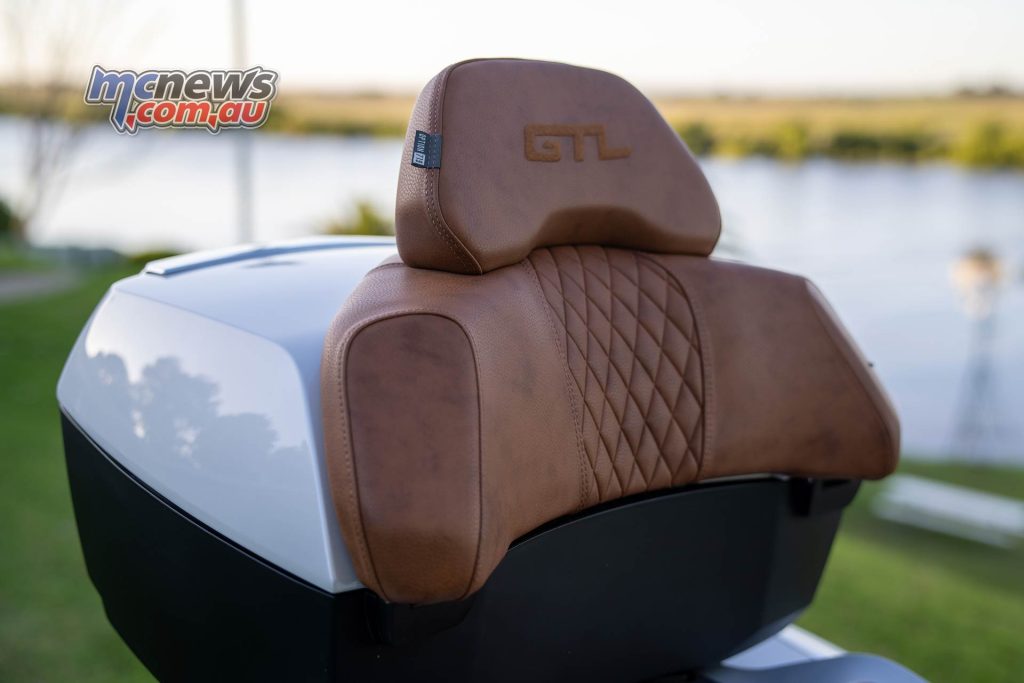
There is plenty of storage space, 115 litres of it according to BMW. The top-box will take a full face helmet, but mine would only fit when laid on its side. The side panniers though easily swallowed my Shoei GT-Air when placed upright. The top-box is nicely carpeted inside and can be easily removed when not required.
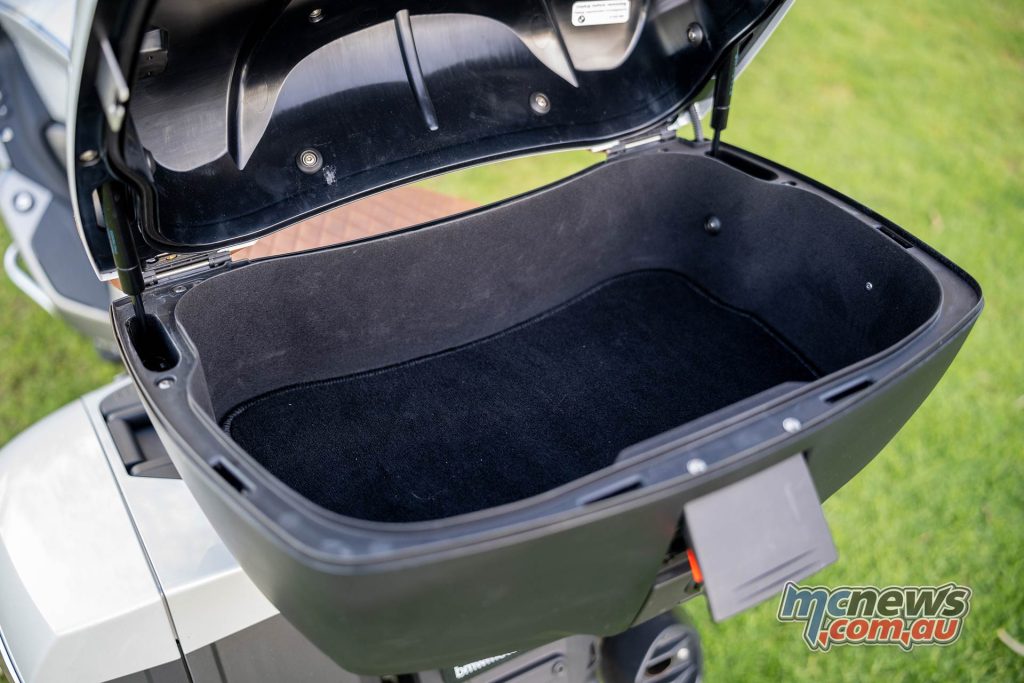
All the luggage compartments can be locked or unlocked by a button press on the key-fob, or via a button on the bars, as long as the proximity key is close to the bike of course.
I do feel that at this price point BMW should throw in some nice custom fit pannier liner bags that conform perfectly to the shape and size of the storages. This enables you to simply pull the bags in or out for overnight stops in the comfort of knowing that if you can fit it in the bag, then it will fit in the contours of the pannier or top-box perfectly and without hassle. I am a big fan of such bags and I thoroughly recommend any potential purchaser to lean on the dealer to throw some in.
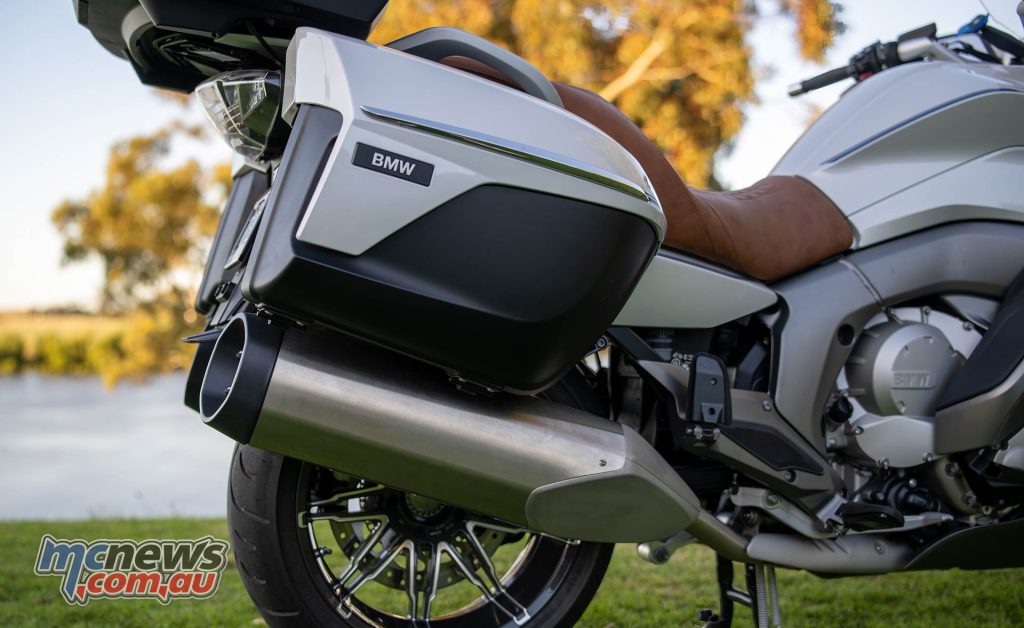
There is a also a pocket in each side of the fairing just in front of the rider’s knee, they will swallow some small trinkets but there was no chance my iPhone Max was going to fit in either of them. A garage door opener or the like though woud fit in there no problem.
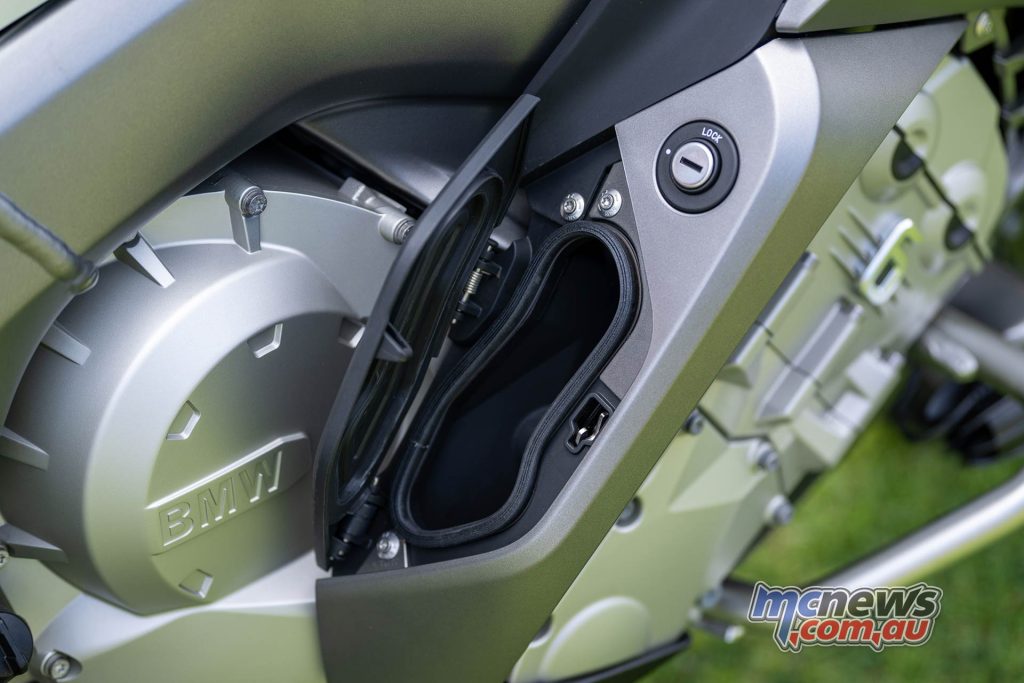
There is just something about bikes with great factory luggage that make you want to travel and ride more. The ease of just throwing some stuff in the panniers for an overnighter makes it that much more appealing to actually just get out there and do it.
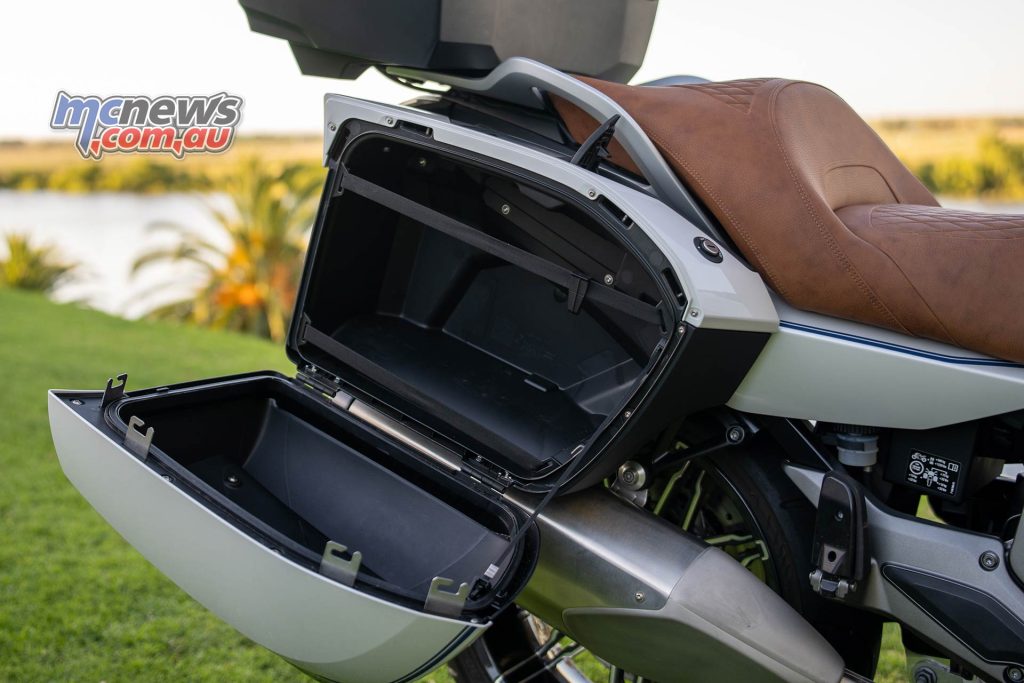
Using the centre-stand on such a heavy bike is never going to be easy, but with some practice it can prove useful and not too onerous to pull the bike up on it.
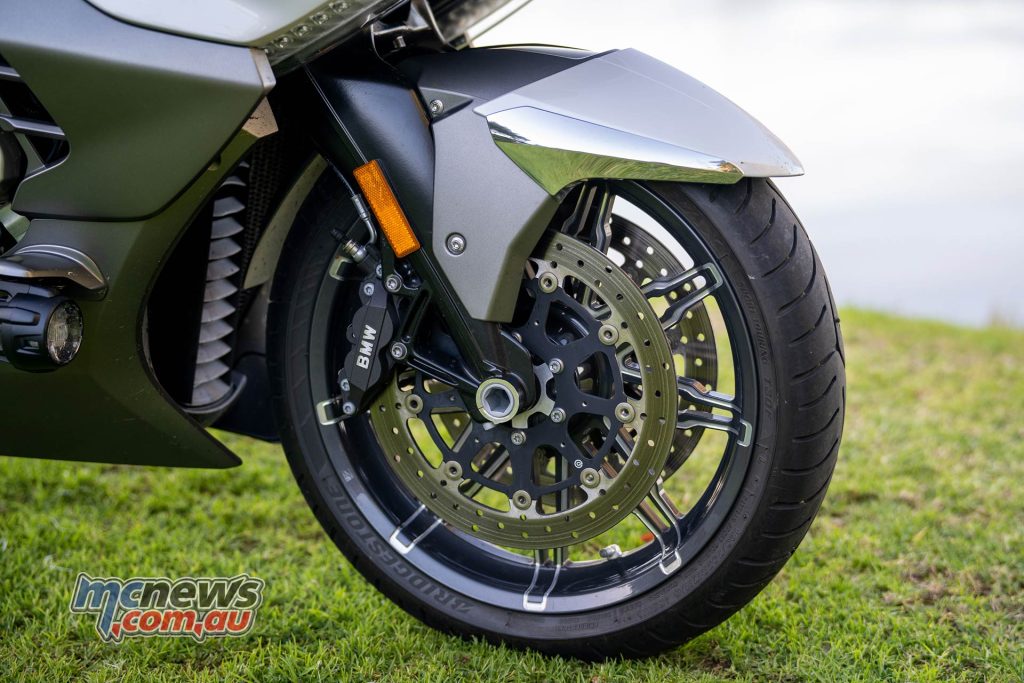
When the front brake lever is pulled the partially integrated braking system also adds a little rear brake for stability.
The 26.5-litre fuel tank was good for just over 350 kilometres on our fresh test bike but I’m sure a loosened up unit should see close to 450 km to a tank if riding at the speed limit.
It is also worthy of note that that BMW give almost their entire range here in Australia a comprehensive three-year warranty which is great piece of mind when you are spending this much coin. The limited dealer network however could prove problematic when touring far and wide across this big country of ours.
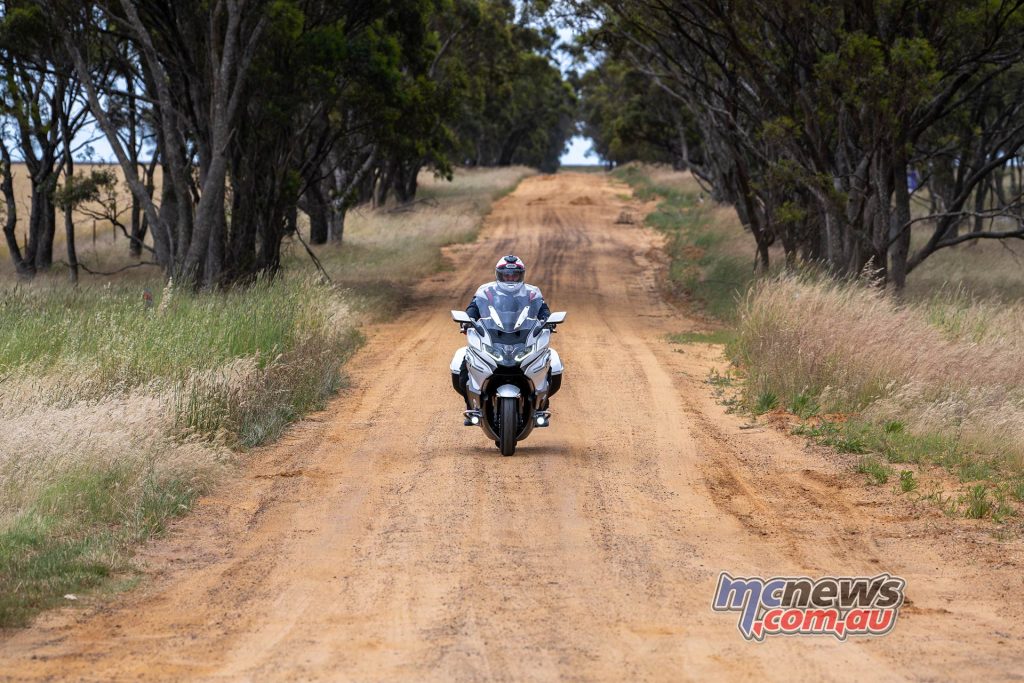
I was very sad to see the GTL go as it really grew on me. I have spent plenty of time with K bikes over the years. I once took a K 1600 GT on a 7000 kilometre sojourn from Melbourne to Darwin then across to Proserpine and already had a real soft spot for them. What I had not been prepared for was how much I was to really fall for the look of this GTL with its Option 719 kit. From the rear quarter in particular, leaned over on its side-stand with those big cannons for mufflers standing out, the bike is really quite striking.
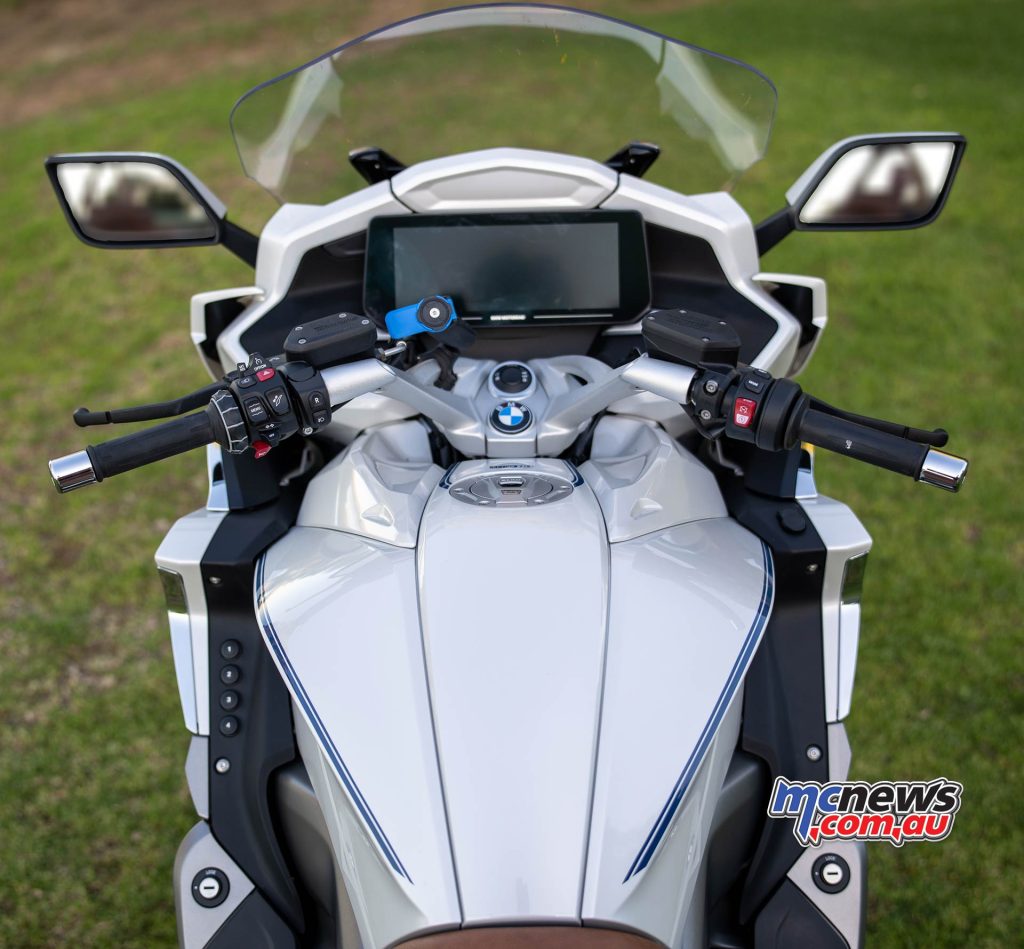
The spendy combination of the Option 719 paint, rims and saddle on our test bike really do make quite a statement. Every time I passed it when parked at home I found myself giving it admiring glances. And to be honest, that doesn’t happen all that much these days.
I am missing it already…
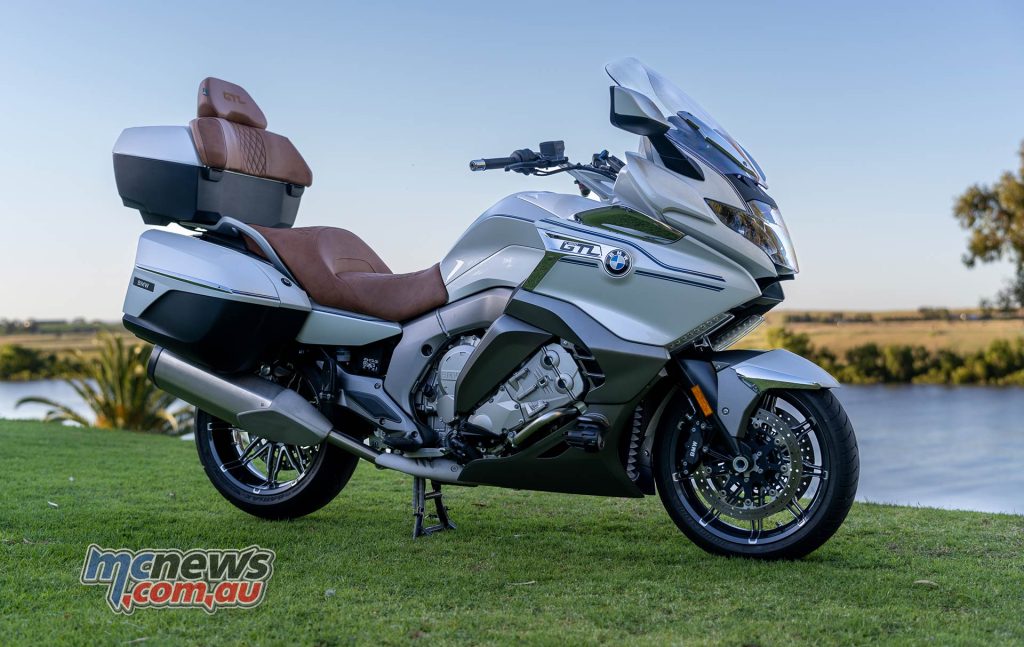
BMW K1600GTL Specifications
| Engine | |
| Displacement | 1649 cc |
| Bore/stroke | 72 x 67.5 mm |
| Power | 118/160.5 kW/hp |
| At rotational speed | 6750 rpm |
| Torque | 180 Nm |
| At rotational speed | 5250 rpm |
| Design | Liquid-cooled six-cylinder four-stroke in-line engine with two chain-driven camshafts on top |
| Compression | 12.2:1 |
| Fuel | Premium unleaded petrol 95 RON |
| Valves per cylinder | 4 |
| Ø intake/exhaust | 29/24.8 mm |
| Ø throttle valve | 52 mm |
| Engine control | BMS-O |
| Emission control | 2 controlled three-way catalytic converters, EU-5 exhaust emission standard |
| Electrical System | |
| Alternator | 700 W |
| Battery | 12/16 V/Ah |
| Headlight | LED |
| Rear light | LED brake light/rear light |
| Starter motor | 700 w |
| Power transmission | |
| Clutch | Multi-disc oil-bath clutch, hydraulically operated |
| Transmission | Claw-operated six-speed transmission with helical gearing |
| Primary transmission | 1.617 |
| I | 2.23 |
| II | 1.641 |
| III | 1.319 |
| IV | 1.101 |
| V | 0.926 |
| VI | 0.788 |
| Secondary drive | Cardan |
| Secondary transmission | 2.75 |
| Chassis | |
| Frame design | Main frame: die-cast, rear frame: aluminium, extruded sections |
| Wheel guide, front wheel | BMW Motorrad Duolever (double trailing arm), central spring strut |
| Wheel guide, rear wheel | Cast aluminium single-sided swinging arm with BMW Motorrad paralever, central spring strut, Dynamic ESA |
| Spring travel, front/rear | 115/135 mm |
| After-run | 106.4 mm |
| Wheelbase | 1,618 mm |
| Steering head angle | 62.2 ° |
| front Brakes | Twin disc brake, Ø 320 mm, four-piston fixed calliper |
| Rear Brakes | Single-disc brake, Ø 320 mm, two-piston floating calliper |
| ABS | standard BMW Motorrad ABS (partially integral) |
| Wheels | Cast aluminium wheels |
| Front Wheel | 3.50 x 17″ |
| Rear Wheel | 6.00 x 17″ |
| Front Tyre | 120/70 ZR 17 |
| Rear Tyre | 190/55 R 17 |
| Dimensions and weights | |
| Overall length | 2489 mm |
| Seat height | 750 mm (standard) (800 mm option) |
| DIN vehicle kerb weight, ready for use | 358 kg |
| Perm. total weight | 560 kg |
| Fuel tank capacity | 26.5 L |
| Riding data | |
| Fuel consumption (WMTC) | 5.9 l/100 km |
| CO2 | 137 g/km |
| Acceleration 0–100 km/h | 3.6 |
| Maximum speed | >200 km/h |




